Pumpkin Harvest Secrets: Unlocking the secrets to a bountiful pumpkin harvest is easier than you think! Have you ever dreamt of carving the perfect jack-o’-lantern from a pumpkin you grew yourself? Or maybe baking a delicious pumpkin pie with ingredients straight from your backyard? I know I have! For centuries, pumpkins have been a symbol of autumn, abundance, and festive celebrations, deeply rooted in cultures around the world. From Native American traditions to modern-day Halloween festivities, the pumpkin holds a special place in our hearts and on our tables.
But let’s be honest, getting those plump, vibrant pumpkins from vine to doorstep can sometimes feel like a challenge. That’s where these DIY tricks and hacks come in! I’m going to share my tried-and-true methods for ensuring a successful pumpkin harvest, even if you’re a beginner gardener. We’ll cover everything from knowing when to pick your pumpkins to curing them properly for long-lasting enjoyment.
Why is this important? Because store-bought pumpkins just don’t compare to the satisfaction of growing your own. Plus, with a few simple techniques, you can avoid common pitfalls like rot, pests, and premature harvesting. Get ready to transform your garden into a pumpkin patch paradise and impress your friends and family with your homegrown gourds!
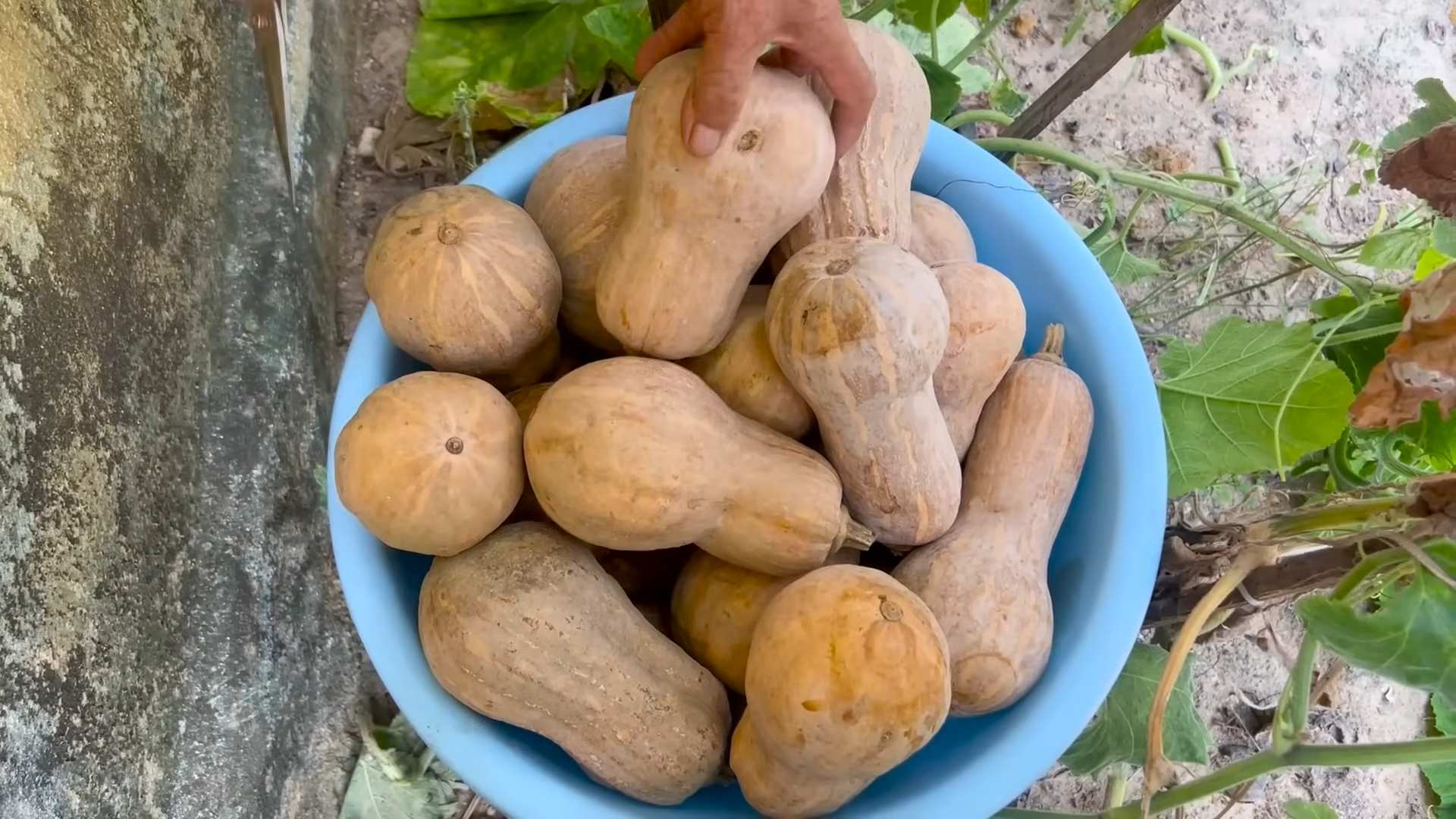
Pumpkin Harvest Secrets: From Vine to Pie (and Everything In Between!)
Okay, pumpkin lovers, gather ’round! I’m going to spill all my secrets for a successful pumpkin harvest. We’re not just talking about grabbing a pumpkin from the store here; we’re talking about nurturing those orange beauties from tiny seeds to glorious gourds ready for carving, baking, and decorating. This guide is packed with tips and tricks I’ve learned over the years, so get ready to become a pumpkin-harvesting pro!
Knowing When Your Pumpkins Are Ready
The most crucial part of a successful harvest is knowing *when* to actually harvest! Don’t jump the gun; patience is key. Here’s what to look for:
* Color: This is the most obvious clue. Your pumpkin should be a deep, rich, uniform color. For most varieties, that’s a vibrant orange, but some are white, green, or even blue! Make sure the entire pumpkin is the correct color for its variety.
* Hard Rind: Gently tap the pumpkin. It should sound hollow. More importantly, the rind should be hard and resistant to scratching. Try pressing your fingernail into the skin. If it easily leaves a mark, the pumpkin isn’t ready. A mature pumpkin will have a tough rind that’s difficult to penetrate.
* Dried Stem: The stem (also called the peduncle) connecting the pumpkin to the vine should be completely dry, brown, and hardened. This is a major indicator that the pumpkin has stopped growing and is ready to be picked. A green or partially green stem means it’s not quite there yet.
* Vine Condition: The vine itself will likely start to wither and die back as the pumpkin matures. This is perfectly normal and another sign that the pumpkin is nearing harvest time.
* Days to Maturity: Check your seed packet or plant tag for the “days to maturity.” This is an estimate of how long it takes for the pumpkin to ripen after planting. Keep track of when you planted and use this as a general guideline. Remember, weather conditions can affect this timeline.
Tools You’ll Need
Before you head out to the pumpkin patch (your backyard, that is!), make sure you have these essentials:
* Sharp Pruning Shears or a Strong Knife: You’ll need a clean, sharp tool to cut the stem. Dull tools can damage the pumpkin and the vine.
* Gloves: Pumpkin vines can be prickly and the soil can be messy. Protect your hands!
* Wheelbarrow or Wagon: Depending on the size and number of your pumpkins, you’ll need something to transport them. Those big pumpkins can be surprisingly heavy!
* Clean Cloth or Brush: To gently remove any dirt or debris from the pumpkins.
* Bleach Solution (Optional): A diluted bleach solution (1 part bleach to 10 parts water) can be used to clean the pumpkins and help prevent rot.
* Cardboard or Newspaper: To protect the pumpkins from direct contact with cold surfaces during curing.
Harvesting Your Pumpkins: Step-by-Step
Alright, let’s get down to business! Here’s how to harvest your pumpkins like a pro:
1. Choose a Dry Day: Whenever possible, harvest your pumpkins on a dry day. Wet pumpkins are more susceptible to rot. If rain is unavoidable, make sure to dry them thoroughly after harvesting.
2. Inspect Each Pumpkin: Before cutting, carefully inspect each pumpkin for any signs of damage, such as soft spots, bruises, or insect infestations. Damaged pumpkins won’t store well and should be used immediately.
3. Cut the Stem Carefully: Using your sharp pruning shears or knife, cut the stem about 3-4 inches from the pumpkin. Important: Do NOT cut the stem too close to the pumpkin! This can create an entry point for rot. Also, avoid lifting the pumpkin by the stem, as this can break the stem and damage the pumpkin.
4. Handle with Care: Gently lift the pumpkin and place it in your wheelbarrow or wagon. Avoid dropping or bumping the pumpkins, as this can cause bruising.
5. Clean the Pumpkins: Use a clean cloth or brush to gently remove any dirt or debris from the pumpkins. If desired, you can wipe them down with a diluted bleach solution (1 part bleach to 10 parts water) to help prevent rot. Be sure to let them air dry completely.
6. Transport to Curing Location: Carefully transport the pumpkins to your chosen curing location.
Curing Your Pumpkins: Extending Their Shelf Life
Curing is a crucial step that many people skip, but it significantly extends the shelf life of your pumpkins. It allows the skin to harden and any minor scratches to heal.
1. Choose a Warm, Dry Location: The ideal curing location is a warm, dry, well-ventilated area with temperatures between 80-85°F (27-29°C). A sunny porch, garage, or shed works well. Avoid areas with high humidity.
2. Elevate the Pumpkins: Place the pumpkins on cardboard, newspaper, or wooden pallets to elevate them off the ground and allow for good air circulation. This helps prevent moisture buildup and rot.
3. Arrange for Air Circulation: Make sure there’s plenty of space between the pumpkins to allow for good air circulation. Don’t overcrowd them.
4. Curing Time: Cure the pumpkins for 10-14 days. Turn them occasionally to ensure even curing.
5. Monitor for Rot: Check the pumpkins regularly for any signs of rot, such as soft spots or mold. Remove any pumpkins that show signs of rot to prevent it from spreading to the others.
Storing Your Pumpkins: Keeping Them Fresh
After curing, your pumpkins are ready for long-term storage. Here’s how to keep them fresh for as long as possible:
1. Choose a Cool, Dry, Dark Location: The ideal storage location is a cool, dry, dark place with temperatures between 50-60°F (10-15°C). A basement, root cellar, or unheated garage works well.
2. Elevate the Pumpkins: Again, place the pumpkins on cardboard, newspaper, or wooden pallets to elevate them off the ground and allow for good air circulation.
3. Avoid Direct Sunlight: Direct sunlight can cause the pumpkins to rot.
4. Check Regularly: Check the pumpkins regularly for any signs of rot. Remove any pumpkins that show signs of rot to prevent it from spreading to the others.
5. Storage Life: Properly cured and stored pumpkins can last for several months. The exact storage life will depend on the variety of pumpkin and the storage conditions.
Troubleshooting Common Pumpkin Problems
Even with the best care, you might encounter some problems along the way. Here are a few common issues and how to address them:
* Powdery Mildew: This fungal disease appears as a white, powdery coating on the leaves. To prevent it, ensure good air circulation around your plants and avoid overhead watering. If you see powdery mildew, you can treat it with a fungicide or a homemade solution of baking soda and water.
* Squash Bugs: These pests can damage your pumpkin vines and fruits. Handpick them off the plants or use an insecticidal soap.
* Squash Vine Borers: These pests bore into the stems of pumpkin vines, causing them to wilt and die. To prevent them, wrap the base of the stems with aluminum foil or netting. If you see signs of squash vine borers, you can try injecting Bacillus thuringiensis (Bt) into the stems.
* Rot: Rot is usually caused by moisture or damage to the pumpkin. To prevent rot, handle the pumpkins carefully, avoid cutting the stems too short, and ensure good air circulation during curing and storage.
Using Your Harvest: Beyond Jack-O’-Lanterns
Okay, you’ve harvested and stored your pumpkins. Now what? Here are just a few ideas:
* Carving: Of course, the classic Jack-o’-lantern is a must!
* Baking: Pumpkin pie, pumpkin bread, pumpkin muffins – the possibilities are endless!
* Roasting: Roasted pumpkin is a delicious and healthy side dish.
* Soup: Pumpkin soup is a warm and comforting fall favorite.
* Seeds: Don’t forget to roast the pumpkin seeds! They’re a healthy and delicious snack.
Okay, pumpkin lovers, gather ’round! I’m going to spill all my secrets for a successful pumpkin harvest. We’re not just talking about grabbing a pumpkin from the store here; we’re talking about nurturing those orange beauties from tiny seeds to glorious gourds ready for carving, baking, and decorating. This guide is packed with tips and tricks I’ve learned over the years, so get ready to become a pumpkin-harvesting pro!
Knowing When Your Pumpkins Are Ready
The most crucial part of a successful harvest is knowing *when* to actually harvest! Don’t jump the gun; patience is key. Here’s what to look for:
* Color: This is the most obvious clue. Your pumpkin should be a deep, rich, uniform color. For most varieties, that’s a vibrant orange, but some are white, green, or even blue! Make sure the entire pumpkin is the correct color for its variety.
* Hard Rind: Gently tap the pumpkin. It should sound hollow. More importantly, the rind should be hard and resistant to scratching. Try pressing your fingernail into the skin. If it easily leaves a mark, the pumpkin isn’t ready. A mature pumpkin will have a tough rind that’s difficult to penetrate.
* Dried Stem: The stem (also called the peduncle) connecting the pumpkin to the vine should be completely dry, brown, and hardened. This is a major indicator that the pumpkin has stopped growing and is ready to be picked. A green or partially green stem means it’s not quite there yet.
* Vine Condition: The vine itself will likely start to wither and die back as the pumpkin matures. This is perfectly normal and another sign that the pumpkin is nearing harvest time.
* Days to Maturity: Check your seed packet or plant tag for the “days to maturity.” This is an estimate of how long it takes for the pumpkin to ripen after planting. Keep track of when you planted and use this as a general guideline. Remember, weather conditions can affect this timeline.
Tools You’ll Need
Before you head out to the pumpkin patch (your backyard, that is!), make sure you have these essentials:
* Sharp Pruning Shears or a Strong Knife: You’ll need a clean, sharp tool to cut the stem. Dull tools can damage the pumpkin and the vine.
* Gloves: Pumpkin vines can be prickly and the soil can be messy. Protect your hands!
* Wheelbarrow or Wagon: Depending on the size and number of your pumpkins, you’ll need something to transport them. Those big pumpkins can be surprisingly heavy!
* Clean Cloth or Brush: To gently remove any dirt or debris from the pumpkins.
* Bleach Solution (Optional): A diluted bleach solution (1 part bleach to 10 parts water) can be used to clean the pumpkins and help prevent rot.
* Cardboard or Newspaper: To protect the pumpkins from direct contact with cold surfaces during curing.
Harvesting Your Pumpkins: Step-by-Step
Alright, let’s get down to business! Here’s how to harvest your pumpkins like a pro:
1. Choose a Dry Day: Whenever possible, harvest your pumpkins on a dry day. Wet pumpkins are more susceptible to rot. If rain is unavoidable, make sure to dry them thoroughly after harvesting.
2. Inspect Each Pumpkin: Before cutting, carefully inspect each pumpkin for any signs of damage, such as soft spots, bruises, or insect infestations. Damaged pumpkins won’t store well and should be used immediately.
3. Cut the Stem Carefully: Using your sharp pruning shears or knife, cut the stem about 3-4 inches from the pumpkin. Important: Do NOT cut the stem too close to the pumpkin! This can create an entry point for rot. Also, avoid lifting the pumpkin by the stem, as this can break the stem and damage the pumpkin.
4. Handle with Care: Gently lift the pumpkin and place it in your wheelbarrow or wagon. Avoid dropping or bumping the pumpkins, as this can cause bruising.
5. Clean the Pumpkins: Use a clean cloth or brush to gently remove any dirt or debris from the pumpkins. If desired, you can wipe them down with a diluted bleach solution (1 part bleach to 10 parts water) to help prevent rot. Be sure to let them air dry completely.
6. Transport to Curing Location: Carefully transport the pumpkins to your chosen curing location.
Curing Your Pumpkins: Extending Their Shelf Life
Curing is a crucial step that many people skip, but it significantly extends the shelf life of your pumpkins. It allows the skin to harden and any minor scratches to heal.
1. Choose a Warm, Dry Location: The ideal curing location is a warm, dry, well-ventilated area with temperatures between 80-85°F (27-29°C). A sunny porch, garage, or shed works well. Avoid areas with high humidity.
2. Elevate the Pumpkins: Place the pumpkins on cardboard, newspaper, or wooden pallets to elevate them off the ground and allow for good air circulation. This helps prevent moisture buildup and rot.
3. Arrange for Air Circulation: Make sure there’s plenty of space between the pumpkins to allow for good air circulation. Don’t overcrowd them.
4. Curing Time: Cure the pumpkins for 10-14 days. Turn them occasionally to ensure even curing.
5. Monitor for Rot: Check the pumpkins regularly for any signs of rot, such as soft spots or mold. Remove any pumpkins that show signs of rot to prevent it from spreading to the others.
Storing Your Pumpkins: Keeping Them Fresh
After curing, your pumpkins are ready for long-term storage. Here’s how to keep them fresh for as long as possible:
1. Choose a Cool, Dry, Dark Location: The ideal storage location is a cool, dry, dark place with temperatures between 50-60°F (10-15°C). A basement, root cellar, or unheated garage works well.
2. Elevate the Pumpkins: Again, place the pumpkins on cardboard, newspaper, or wooden pallets to elevate them off the ground and allow for good air circulation.
3. Avoid Direct Sunlight: Direct sunlight can cause the pumpkins to rot.
4. Check Regularly: Check the pumpkins regularly for any signs of rot. Remove any pumpkins that show signs of rot to prevent it from spreading to the others.
5. Storage Life: Properly cured and stored pumpkins can last for several months. The exact storage life will depend on the variety of pumpkin and the storage conditions.
Troubleshooting Common Pumpkin Problems
Even with the best care, you might encounter some problems along the way. Here are a few common issues and how to address them:
* Powdery Mildew: This fungal disease appears as a white, powdery coating on the leaves. To prevent it, ensure good air circulation around your plants and avoid overhead watering. If you see powdery mildew, you can treat it with a fungicide or a homemade solution of baking soda and water.
* Squash Bugs: These pests can damage your pumpkin vines and fruits. Handpick them off the plants or use an insecticidal soap.
* Squash Vine Borers: These pests bore into the stems of pumpkin vines, causing them to wilt and die. To prevent them, wrap the base of the stems with aluminum foil or netting. If you see signs of squash vine borers, you can try injecting Bacillus thuringiensis (Bt) into the stems.
* Rot: Rot is usually caused by moisture or damage to the pumpkin. To prevent rot, handle the pumpkins carefully, avoid cutting the stems too short, and ensure good air circulation during curing and storage.
Using Your Harvest: Beyond Jack-O’-Lanterns
Okay, you’ve harvested and stored your pumpkins. Now what? Here are just a few ideas:
* Carving: Of course, the classic Jack-o’-lantern is a must!
* Baking: Pumpkin pie, pumpkin bread, pumpkin muffins – the possibilities are endless!
* Roasting: Roasted pumpkin is a delicious and healthy side dish.
* Soup: Pumpkin soup is a warm and comforting fall favorite.
* Seeds: Don’t forget to roast the pumpkin seeds! They’re a healthy and delicious snack.
* Decoration: Use your pumpkins to decorate your home for fall.
Choosing the Right Pumpkin Variety
Not all pumpkins are created equal! Some are better for carving, while others are better for baking. Here are a few popular varieties:
* Jack O’ Lantern: The classic carving pumpkin.
* Sugar Pie: A small, sweet pumpkin that’s perfect for baking.
* Cinderella: A beautiful, flattened pumpkin that’s great for decoration and baking.
* Jarrahdale: A
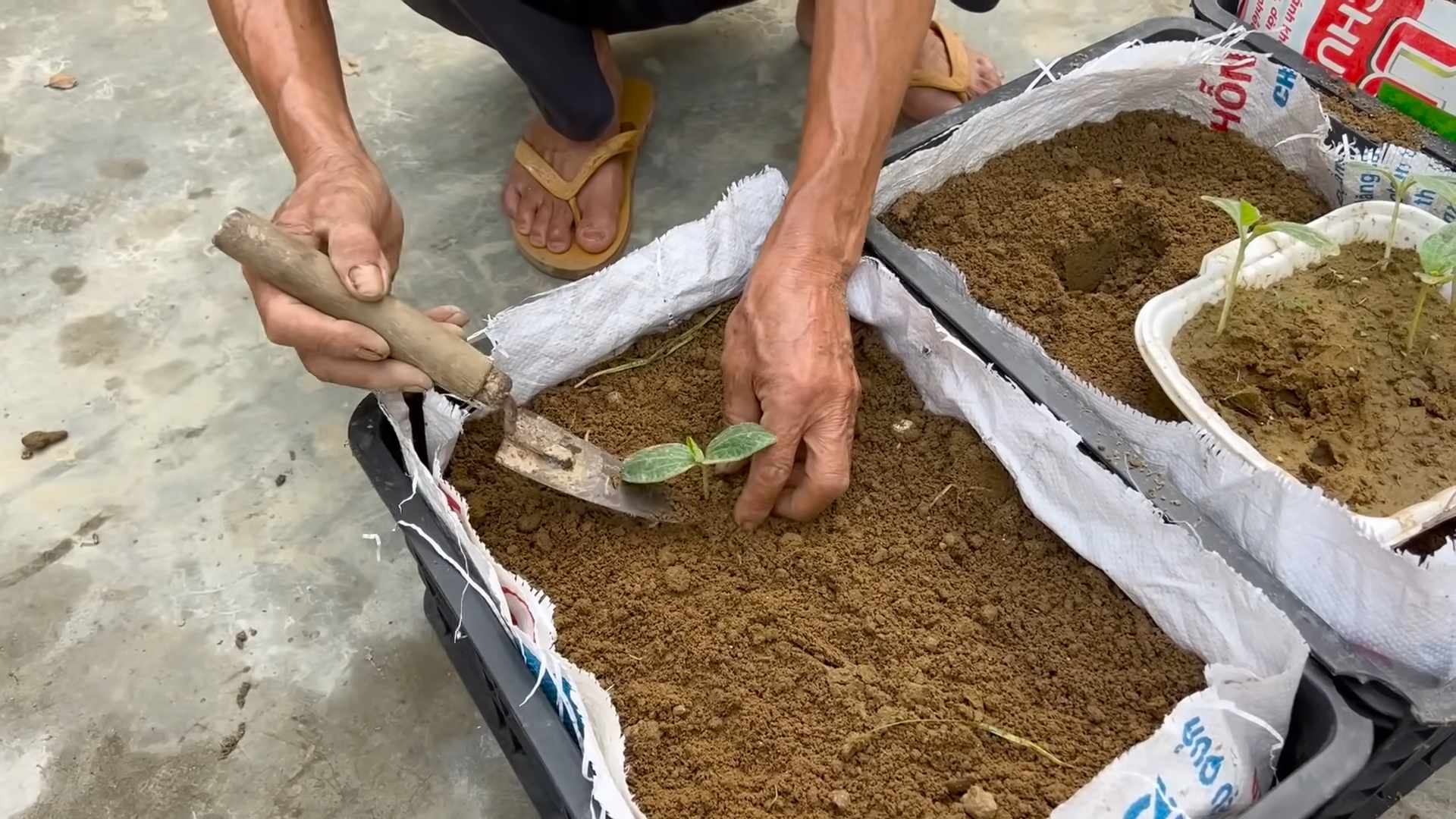
Conclusion
So, there you have it! Unlocking the full potential of your pumpkin harvest doesn’t require expensive equipment or years of experience. This simple, yet effective DIY trick, born from generations of pumpkin growers, is a game-changer for anyone looking to maximize the flavor, longevity, and overall quality of their autumn bounty. We’ve shown you how to easily cure your pumpkins, a process that significantly extends their shelf life and intensifies their sweetness, making them perfect for pies, soups, decorations, and all your favorite fall recipes.
Why is this DIY trick a must-try? Because it’s accessible, affordable, and delivers tangible results. Imagine biting into a pumpkin pie made with pumpkins that have been properly cured, their natural sugars concentrated to create an unparalleled depth of flavor. Think of the satisfaction of displaying vibrant, long-lasting pumpkins throughout the fall season, knowing you’ve preserved their beauty with your own two hands. This isn’t just about preserving pumpkins; it’s about embracing a time-honored tradition and connecting with the natural rhythms of the harvest.
But don’t stop there! Feel free to experiment with variations on this method. For example, if you live in a particularly humid climate, consider using a small fan to circulate air around your pumpkins during the curing process. This will help to prevent mold and ensure even drying. You can also try adding a few drops of tea tree oil to your cleaning solution for its natural antifungal properties. Another variation is to use a diluted bleach solution (1 part bleach to 10 parts water) for cleaning, but be sure to rinse the pumpkins thoroughly afterward.
For decorative pumpkins, consider applying a thin coat of clear acrylic sealant after curing to further protect them from the elements and enhance their shine. This is especially useful if you plan to display your pumpkins outdoors. You can also get creative with decorating them before or after curing. Painting, carving, or adding embellishments can transform your pumpkins into unique works of art.
Ultimately, the best way to discover the magic of this DIY trick is to try it for yourself. Gather your pumpkins, follow the simple steps outlined above, and witness the transformation firsthand. We are confident that you’ll be amazed by the difference it makes.
We encourage you to embark on this pumpkin-preserving adventure and share your experiences with us! Did you notice a significant improvement in the flavor of your pumpkins? Did you find any creative variations that worked particularly well? Share your photos, tips, and stories in the comments section below. Let’s build a community of pumpkin enthusiasts who are passionate about preserving the bounty of the harvest. Your insights could inspire others to try this DIY trick and unlock the full potential of their own pumpkin harvests. Let’s celebrate the season together, one perfectly cured pumpkin at a time! Mastering this **pumpkin harvest** secret will undoubtedly elevate your autumn experience.
Frequently Asked Questions (FAQ)
Q: How long should I cure my pumpkins?
A: The ideal curing time for pumpkins is typically 10-14 days. However, this can vary depending on the size of the pumpkin and the environmental conditions. The key is to monitor your pumpkins closely and look for signs that they are properly cured. A well-cured pumpkin will have a hardened rind, a deeper color, and a lighter weight. If you live in a particularly humid climate, you may need to extend the curing time slightly. Conversely, if you live in a dry climate, you may be able to shorten the curing time.
Q: What is the best temperature for curing pumpkins?
A: The optimal temperature for curing pumpkins is between 80-85 degrees Fahrenheit (27-29 degrees Celsius). This temperature range allows the pumpkins to dry out properly without becoming too hot or too cold. Avoid curing pumpkins in direct sunlight, as this can cause them to overheat and spoil. If you don’t have a space that consistently maintains this temperature, you can use a heat lamp or a space heater to create a warmer environment. Just be sure to monitor the temperature closely and avoid overheating the pumpkins.
Q: What if I don’t have a warm, dry place to cure my pumpkins?
A: If you don’t have an ideal curing environment, don’t worry! There are still ways to cure your pumpkins successfully. You can use a spare room in your house, a garage, or even a covered porch. The key is to ensure that the space is well-ventilated and protected from direct sunlight and rain. You can also use a dehumidifier to help reduce humidity levels in the curing area. If you live in a cold climate, you may need to bring your pumpkins indoors at night to prevent them from freezing.
Q: How do I know if my pumpkins are properly cured?
A: There are several signs that indicate your pumpkins are properly cured. First, the rind should be hard and resistant to scratching. Second, the color of the pumpkin should be deeper and more vibrant. Third, the pumpkin should feel lighter than it did before curing. Finally, you can tap on the pumpkin and listen for a hollow sound. If your pumpkins exhibit these characteristics, they are likely properly cured and ready to be stored or used in your favorite recipes.
Q: Can I cure pumpkins that have blemishes or bruises?
A: It’s best to avoid curing pumpkins that have significant blemishes or bruises, as these areas are more susceptible to rot and decay. However, if the blemishes are minor, you can try to carefully clean and disinfect the affected areas before curing. Use a diluted bleach solution or a natural antifungal spray to kill any bacteria or fungi that may be present. Monitor the pumpkins closely during the curing process and discard any that show signs of spoilage.
Q: How long will cured pumpkins last?
A: Properly cured pumpkins can last for several months, sometimes even up to a year, if stored correctly. The key is to store them in a cool, dry, and well-ventilated place. Avoid storing pumpkins in direct sunlight or in areas with high humidity. You can also place them on a bed of straw or cardboard to prevent them from sitting directly on the ground. Check your pumpkins regularly for signs of spoilage, such as soft spots, mold, or discoloration.
Q: Can I eat the seeds from cured pumpkins?
A: Absolutely! Pumpkin seeds are a delicious and nutritious snack. To roast pumpkin seeds, simply scoop them out of the pumpkin, rinse them thoroughly, and pat them dry. Toss them with olive oil, salt, and any other desired seasonings, such as paprika, garlic powder, or chili powder. Spread the seeds in a single layer on a baking sheet and roast them in a preheated oven at 300 degrees Fahrenheit (150 degrees Celsius) for 20-25 minutes, or until they are golden brown and crispy.
Q: What are some creative ways to use cured pumpkins?
A: Cured pumpkins can be used in a variety of creative ways. Of course, they are perfect for making pumpkin pies, soups, and other traditional fall recipes. But you can also use them to make pumpkin butter, pumpkin bread, pumpkin muffins, and even pumpkin smoothies. For decorative purposes, you can carve them into jack-o’-lanterns, paint them with festive designs, or use them as centerpieces for your fall table. You can also dry the pumpkin flesh and use it to make potpourri or other fragrant crafts. The possibilities are endless!
Q: Is this curing method suitable for all types of pumpkins?
A: While this curing method works well for most common pumpkin varieties, some pumpkins may require slightly different approaches. For example, smaller pumpkins, like pie pumpkins, may cure more quickly than larger pumpkins. Similarly, pumpkins with thinner rinds may be more susceptible to damage during the curing process. It’s always a good idea to research the specific characteristics of your pumpkin variety and adjust the curing method accordingly.
Q: What if my pumpkins start to rot during the curing process?
A: If you notice any signs of rot, such as soft spots, mold, or discoloration, it’s important to remove the affected pumpkins immediately to prevent the rot from spreading to other pumpkins. You can try to salvage the remaining portions of the pumpkin by cutting away the rotten areas and disinfecting the surrounding flesh. However, if the rot is extensive, it’s best to discard the entire pumpkin.

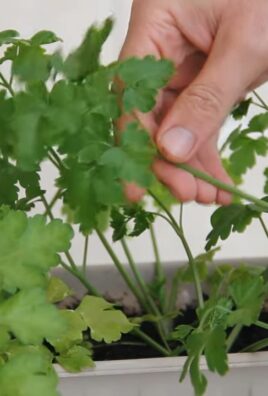
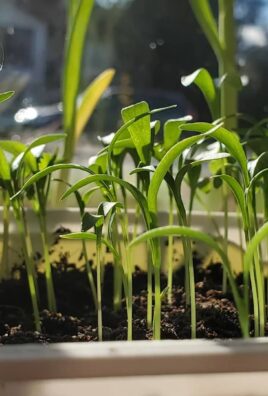
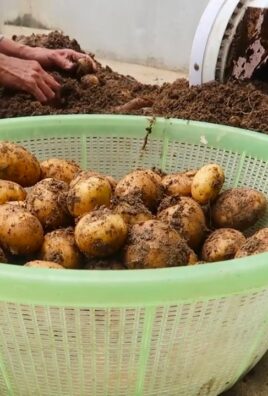
Leave a Comment